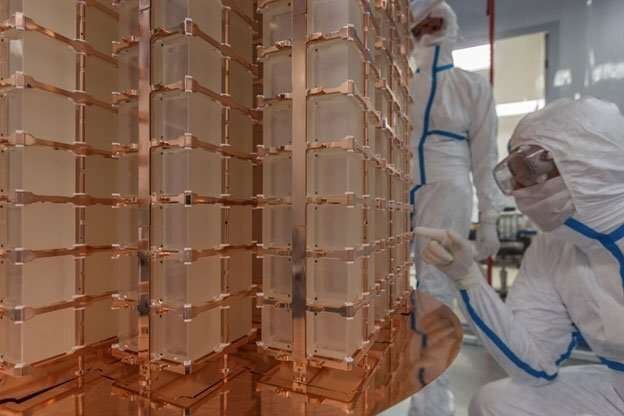The Daily Observer London Desk: Reporter- John Furner
There is so much that we do not yet know about neutrinos. Neutrinos are very light, chargeless, and elusive particles that are involved in a process called beta decay. Understanding this process may reveal the origin of matter in the universe.
Beta decay is a type of radioactive decay that involves a neutron converting into a proton emitting an electron and an antineutrino. Beta decay is very common—it occurs about a dozen of times per second in, for example, a banana. There might also be an ultra-rare kind of beta decay that emits two electrons but no neutrinos.
Nuclear physicists around the world are searching for this neutrinoless-double beta decay (NLDBD) in different nuclei. The interest in these decays arises from their potential to reveal unsolved mysteries related to the universe’s creation of matter. They can also provide hints toward our understanding of the currently unknown mass of neutrinos.
The Cryogenic Underground Observatory for Rare Events (CUORE) can search for these rare NLDBD processes using different nuclei. Scientists rely on complementarity among searches using different nuclei to better understand the underlying physics in the process. Complementarity in physics involves theories that contrast with each other but that both explain part of the same phenomena.
CUORE recently searched for NLDBD using a nucleus that had not previously been studied with CUORE, Tellurim-128. The researchers have so far found no evidence for NLDBD. However, they show that the half-life of Tellurim-128 to decay by NLDBD is longer than 3.6 septillion years (ultra-rare decays have very long half-lives). This lower limit is about 30 times higher than those found from prior experiments using the same technique. This new search extends scientists’ knowledge on these rare nuclear decays. The findings are published in Physical Review Letters.
CUORE is one of the world-leading experiments searching for extremely rare nuclear processes. CUORE needs a very low-radioactivity environment, which is achieved by using extremely clean materials and by using the Gran Sasso Mountain, which shields the experiment from cosmic rays. CUORE consists of almost 1,000 crystals that are kept at a temperature close to absolute zero by a dedicated refrigeration structure. The temperature of the crystals is measured 1,000 times per second, saved to disk, and analyzed to spot the tiny amount of temperature variations caused by the rare decays.
Since the beginning of its operation in 2017, CUORE has collected a huge amount of data, and it will continue for at least two more years. Researchers expect better results in the search for NLDBD processes on the nucleus Tellurim-128 in the near future. After CUORE, the next-generation of experiments have the potential to unravel several nuclear and particle physics mysteries through the exploration of these elusive processes.



